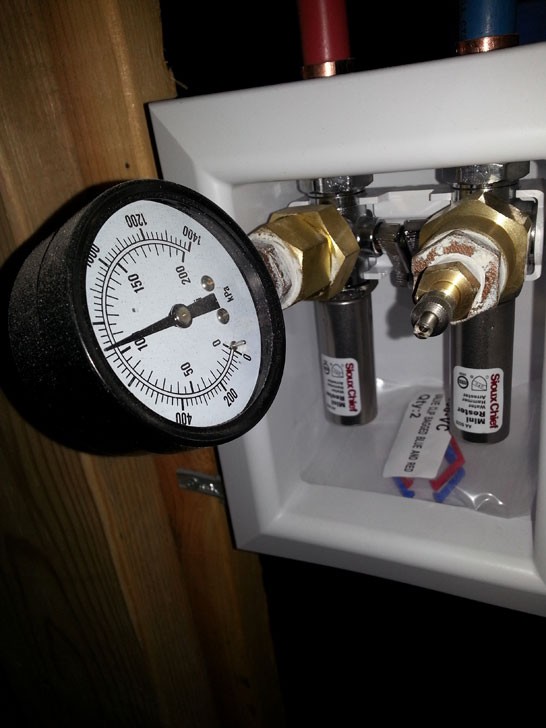Whether we are doing radiant, gas lines, drainage or water piping, the time will come when we make our tests. Testing for gas, radiant heating and water piping is rather similar using compressed air filled via a valve while we keep an eye on the gauge that gives the psi.
In a perfect world, the psi goes rather unchanged, indicating there are no leaks. Although various companies will use different numbers; some close references are 50 psi for water piping, 30 psi for gas and 50 psi for radiant heating.
Testing for radiant will occur at one of the manifolds. All valves will be open and the gauge and filler cap are inserted into the supply and return after the caps are removed.
For water piping, testing will happen at the washer/dryer hookups; one side will have gauge and the other will have the filler valve.
After we fill radiant or water pipe, we can close the valves and open the gauge ones later to see if the readings are unchanged. Closing them after filling eliminates the possibility of our temporary equipment being a source for leaks.

Testing for drainage is a different deal. We fill all the pipe in the house with water until it leaves the top vent. Then, we inspect everything and look for leaks.
